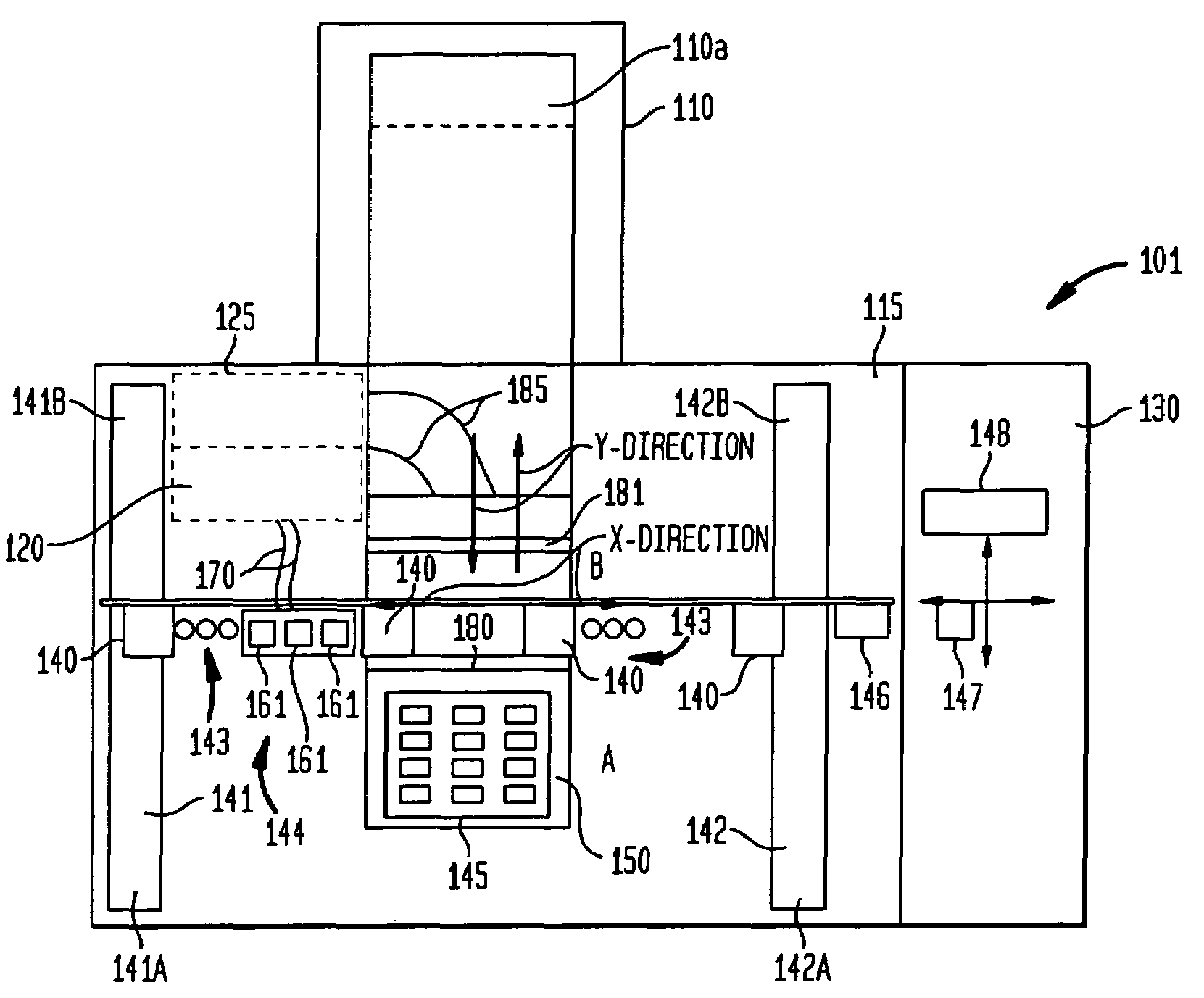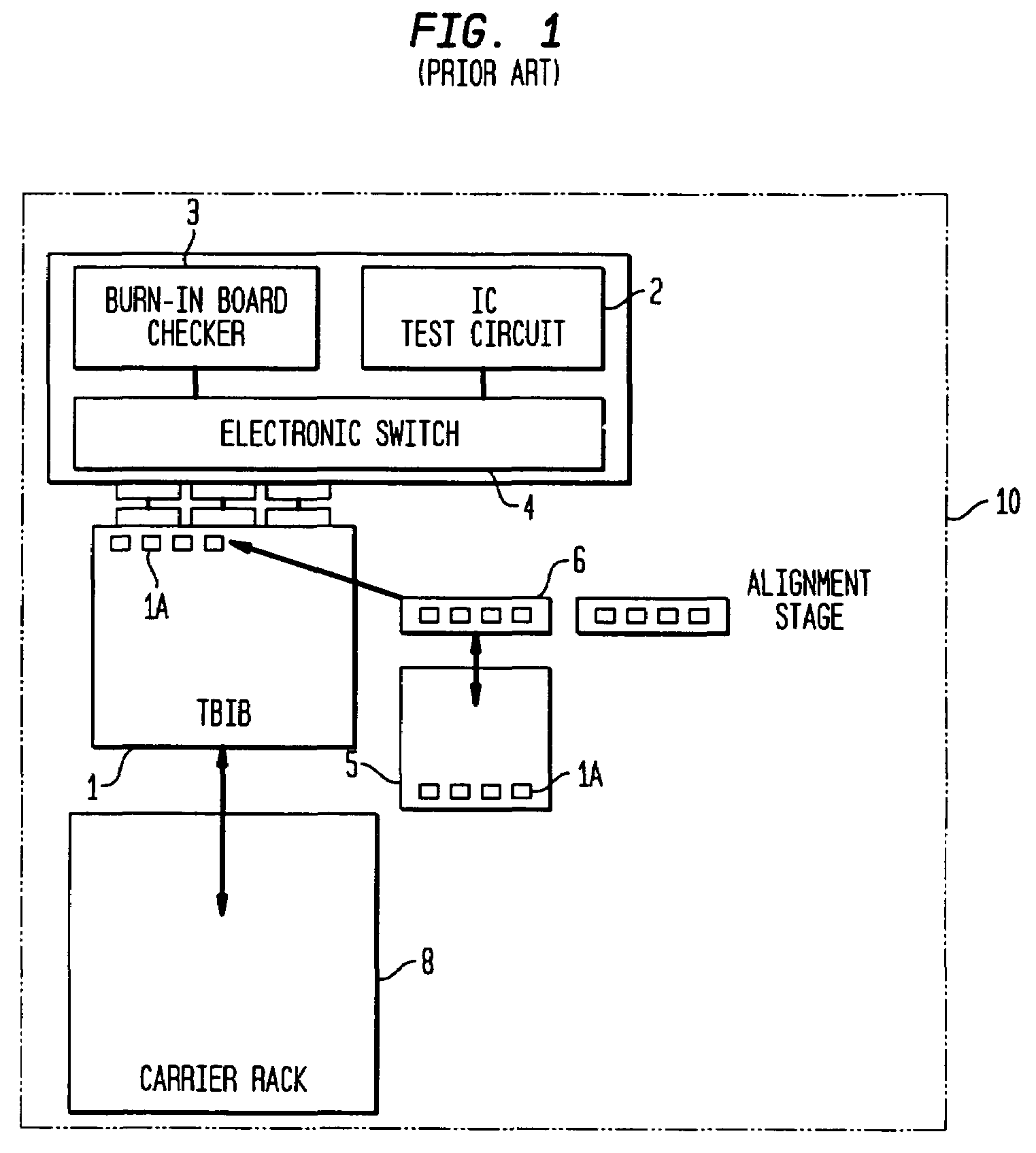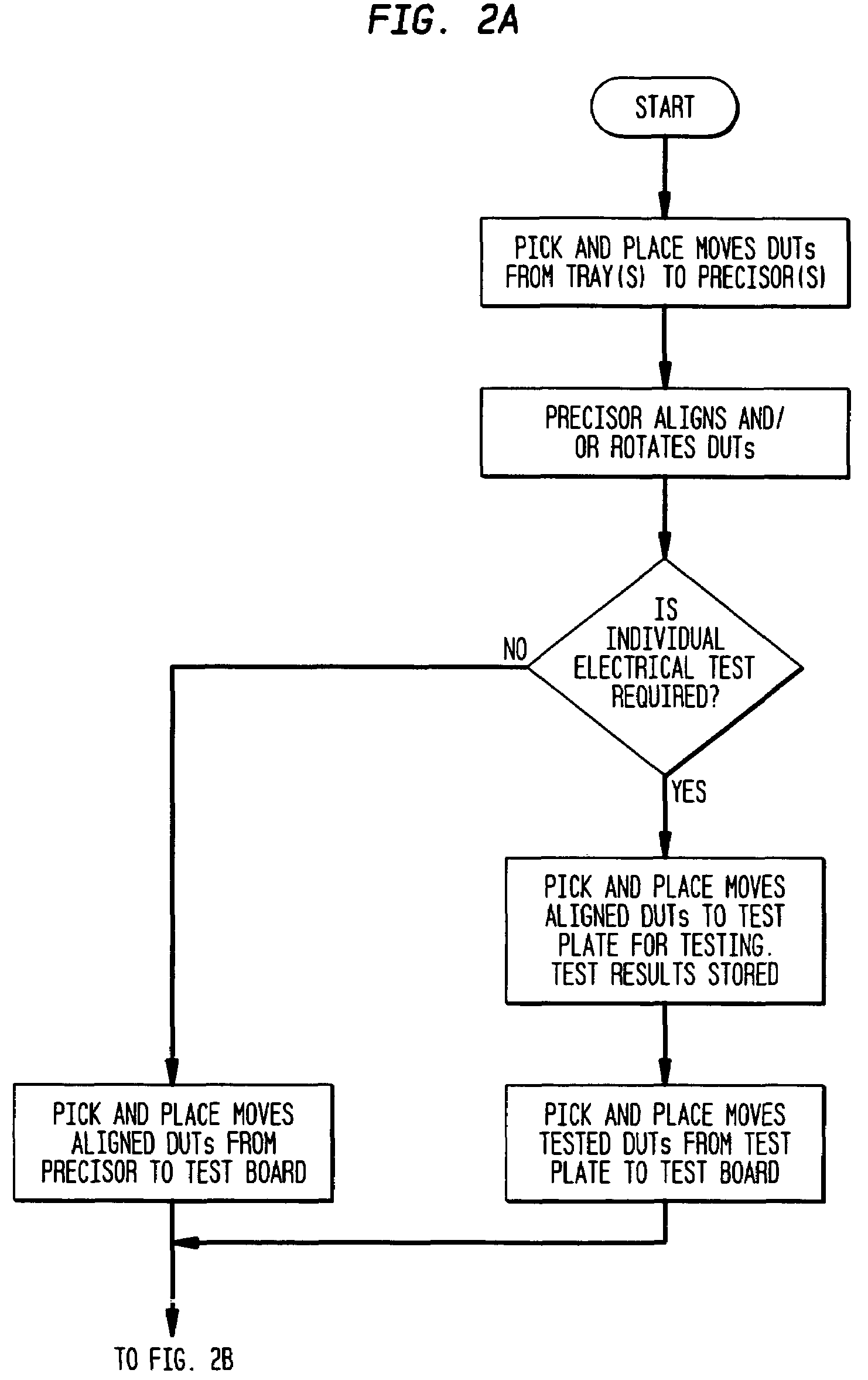Method for testing semiconductor devices and an apparatus therefor
a semiconductor device and apparatus technology, applied in the direction of individual semiconductor device testing, semiconductor/solid-state device testing/measurement, instruments, etc., can solve the problems of adversely affecting the duts, achieve advantageous flexibility in testing, reduce the failure rate, and improve the test efficiency
- Summary
- Abstract
- Description
- Claims
- Application Information
AI Technical Summary
Benefits of technology
Problems solved by technology
Method used
Image
Examples
Embodiment Construction
[0041]An embodiment of the process of the present invention is described with reference to the process flow diagrams in FIG. 2A–2C. Referring to FIG. 2A, the process starts by causing the pick-and place apparatus to pick DUTs from the carrier tray in which the DUT is supplied (e.g. JDEC trays) and place the DUT in an alignment stage referred to as a precisor plate. In the precisor plate, the DUT is rotated (if its orientation is not suited to proper placement in a test socket) and aligned. After alignment the pick-and-place apparatus' next step depends upon an instruction on the mode of test. If the test mode is one that requires the DUT to be subjected to an individual electrical test, the pick-and-place apparatus removes the DUT from the precisor and places it into a test plate for the individual electrical test that requires isolated electrical circuitry. After the individual test is performed, the pick-and-place mechanism takes the DUT from the test plate and inserts it into a s...
PUM
 Login to View More
Login to View More Abstract
Description
Claims
Application Information
 Login to View More
Login to View More - R&D
- Intellectual Property
- Life Sciences
- Materials
- Tech Scout
- Unparalleled Data Quality
- Higher Quality Content
- 60% Fewer Hallucinations
Browse by: Latest US Patents, China's latest patents, Technical Efficacy Thesaurus, Application Domain, Technology Topic, Popular Technical Reports.
© 2025 PatSnap. All rights reserved.Legal|Privacy policy|Modern Slavery Act Transparency Statement|Sitemap|About US| Contact US: help@patsnap.com



